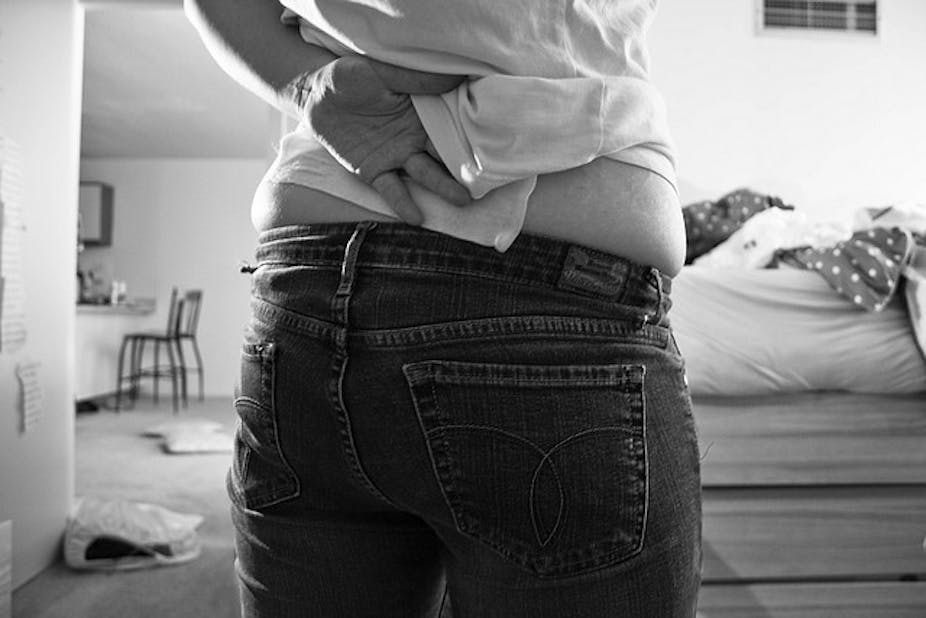Severe low back pain is a common and dreaded problem that rivals only hay fever, asthma, hypertension and dermatitis as Australia’s leading cause of long-term illness.
The instinctive response to severe pain is to rest the injured body part and reduce normal activities while it heals.
But from the mid-1990s, studies comparing bed rest to more active treatment for acute back pain have reached the same conclusion: bed rest is not best for pack pain.
Light activity – such as short walks around the house or sitting upright for brief periods throughout the day – reduces the requirement for medication, shortens absences from work and results in fewer visits to health-care professionals.
Bed rest isn’t completely forbidden but we know it should be minimised to the shortest time possible. Understanding why it’s so important to remain active is more elusive.
The brain’s role
It’s tempting to assume that chronic pain only occurs in the weak and petulant. But personality factors are one of the few things we’re sure of that doesn’t contribute to the risk of developing long-term pain.
Those who overlook medical advice and avoid activity may be doing so because they’re trying to cope with high pain levels by avoiding all possible movements which may increase it. But the resulting bed rest has a compounding effect on the level and duration of their pain.
Long periods of immobility give the lumbar-stabilising muscles time to lose condition, making recovery of normal movements more difficult when the initial pain settles.
A fearful emotional response to back pain often results in longer recovery and higher risk of disability. Interestingly, this emotional response may reflect a hardwired predisposition in the brain of the pain sufferer – not a weak or melodramatic personality.
So remember: you’re not to blame for how your brain reacts in a major pain crisis!
Breaking the cycle
Anticipation of pain can itself cause protective movements to persist for longer than necessary.
A vicious cycle of pain followed by more rest, followed by new pain due to that rest, can spiral downwards over a couple of months and leave you with abnormal movement patterns.
Imagine continuing to limp months after your ankle sprain has healed because you were worried that it would still hurt. You would have secondary pains in the other foot, back and hip due to the persistent limping alone.
Restoration of the pain sufferer’s trust in their own back is vital.
This trust tends to be eroded by prolonged bed rest – anyone put to bed for more than a couple of days will develop stiffness and pain in the muscles and joints, and this is equally true for the back.
It’s not all bad news
It’s reassuring to know that more than 80% of acute back pain will settle within six weeks regardless of the treatment approach used. And fewer than half of those not better by six weeks will go on to have long-term pain.
The goal of managing acute back pain is to reduce it to a point where the sufferer can stay moderately active while the pain settles over the usual four-to-six-week period, rather than getting rid of it immediately and completely.
With sensible activity and treatment plans, acute back pain sufferers have good outcomes 95% of the time.

